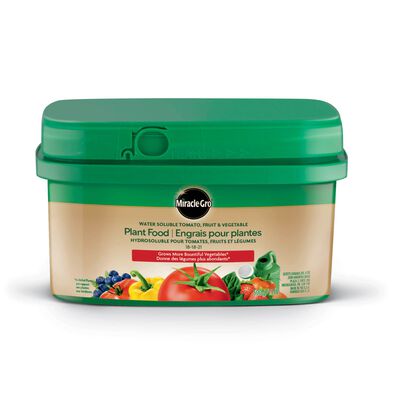
Growing a Small-Space Vegetable Garden
Small Space, Big Rewards
There is no shortage of reasons to start growing a vegetable garden. Aside from yielding a delicious bounty for your family and friends, there are numerous additional benefits. It's cost effective, healthy and it's a great family activity. As you learn more about gardening and enjoy the outdoors, you can also share learning experiences and create memories for your kids. Follow these steps to be on your way to a harvest of vegetables, even if you're short on space.
1. Plan Your Vegetable Garden
First, gauge your ambition and decide how big of a garden you actually want. When you're first staring out it's best to start small. The more sun the better. Be sure to pick a spot in your yard that gets at least six hours of sunlight per day.
2. Preparation and Soil
You can use one of two different kinds of beds for your vegetable garden: in-ground or raised-bed. In-ground garden beds are the easiest way to get started. They're cheap and less labor-intensive. Raised garden beds provide good drainage, but you'll need to buy either the beds in a kit or the wood to build them. As far as soil goes, make sure your soil is well aerated to promote root growth and worm activity. The soil should be crumbly, not clumpy. For in-ground beds amend the native soil with garden soil, such as Miracle-Gro® Potting Mix for Vegetable & Herbs. Mix a 3-inch layer into the top 6 inches of your garden bed. For raised-bed gardens, fill the beds with a 50:50 mix of garden soil, such as Miracle-Gro® Moisture Control® Garden Soil, and native soil or topsoil.
3. Select Your Vegetable Seeds or Starter Plants
Now you can choose what you want to grow and whether you'd like to grow seeds or starter plants. Keep in mind what grows best in your area and the space you have allocated. If you plant seeds, the packet will have clear directions. Just remember that starting from seed will take longer than starter plants to produce vegetables.
With vegetables, timing is everything. Broccoli, carrots, lettuce, peas and spinach tend to like cool weather. So you can plant them one month before the last expected frost in your area. After the last frost, plant your warm-weather vegetables, such as corn, tomatoes, cucumbers and peppers.
4. Explore Your Space
Once you have decided what to plant, you can then assess the space required for each, noting the instructions that come with your seeds or starter plants. Root vegetables like radishes and carrots can need up to 12 inches of space between plants. Smaller, leafy vegetables like spinach and lettuce need 4 to 6 inches of space, while large vegetables like eggplant and pumpkin can need up to 2 feet between each plant.
5. Feed and Water Your Vegetables
If you start your plants from seeds, your plants just need to be kept moist while they are seedlings. Once your seedlings have true leaves, or if you plant starter plants, watering and feeding should be a regular routine. Aim for the base of the plant when watering and feeding. Use a plant food specially formulated for fruits and vegetables every 2 weeks, such as Miracle-Gro® Water Soluble Tomato, Fruit & Vegetable Plant Food.
6. Mulch and Prevent Weeds
In between planting and harvest, your vegetable garden will require some additional care. Weeds compete with your vegetables, stealing nutrients, water and sunlight, so you want to keep them out. A 3-inch layer of mulch, such as Scotts® Nature Scapes® Advanced Color Enhanced Mulch around your plants will help discourage weeds.
